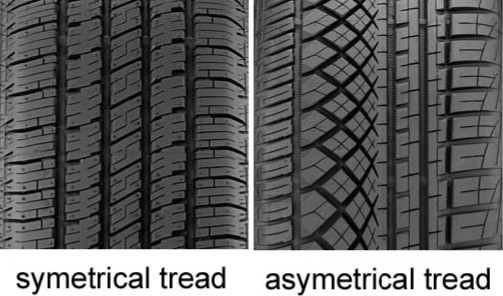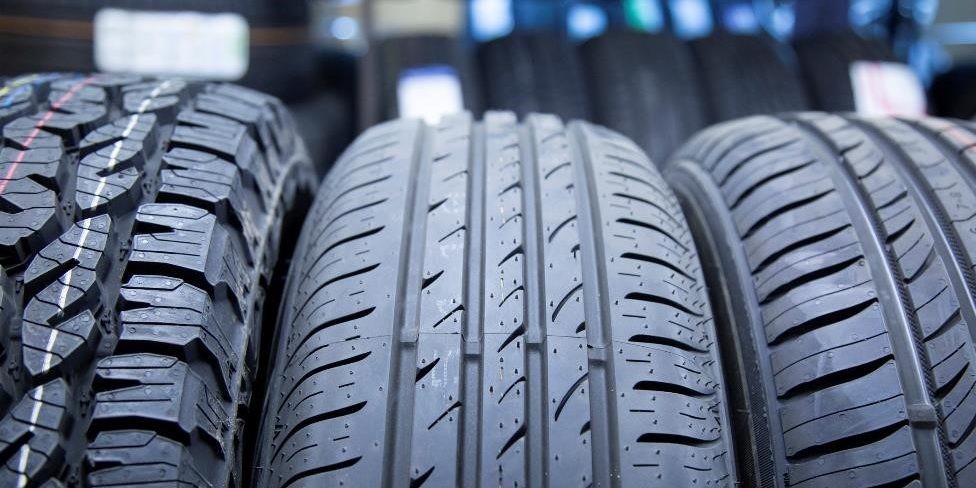What is Tire Tread? When it comes to driving, you need to observe your general safety, this can help to get achieved through proper tire care. When it comes to appropriate tire care, it’s always important to note proper tire tread. When driving, we are all aware that a small part of the tire is what comes into contact with the road and the tire tread is what keeps you moving in the right direction. Tire tread plays a major role in the quality of your vehicle’s tires.
What is Tire Tread?
Many think of a tire tread as the knobs or shapes that can be easily seen on the part of the tire that comes in contact with the road. Tire tread actually consists of several components including the shape of the tire, the tread blocks (also known as tread lugs), the tread grooves, tread voids, wear bar, and any extra features such as rain grooves and sipes.
Tire tread isn’t a singular piece, but the whole of the tire that stretches from shoulder to shoulder where the tread meets the sidewall. The tread blocks are most often referred to as the tread. Tread blocks are the chunks of rubber that protrude from the surface of the tire. They’re the part that actually touches the road. Between them are the grooves and tread voids.
What Do Tire Treads Do and Why Are They Important
Tire treads are the most overlooked elements of a vehicle despite being one of the most important contributors to safety on the road. While speeding, the main factor preventing you from losing grip and spinning out of control are ridges you see around your wheels.
As your vehicle makes more contact with the ground, your tire treads begin wearing out. This can lead to dangerous consequences; which is exactly why it is very important to keep maintaining your tire treads.
Why Are Tire Treads Important?
You may not realize it, but tire treads have a crucial role to play when you drive your car.
-
Traction
When it comes to tire traction, it often is down to a matter of life or death. According to experts, over 200 people die annually due to weak tire treads. Traction refers to the grip and control your car has over the road while driving.
The tire tread allows your vehicle to maintain this traction so that your driving experience can be a safe and smooth one. The smoother the wheels of your vehicle, the less traction you have. This is why treadless tires are a popular choice for race cars.
However, once their treadless wheels come into contact with any sort of wet or icy roads, the car has a very high chance of slipping off the road and out of control.
-
Handling
Tire treads also have an immense effect on the handling and steering of your car. Different tread patterns will have different functions and outcomes on your driving experience.
For example, symmetrical tread patterns are more equipped for driving on the highway as they provide a smoother driving experience, higher stability, and lower rolling resistance. More asymmetric tire treads provide exceptional handling, higher curve stability, and a stronger grip when driving on wet, slippery roads.
-
Accelerating and Braking
Tire treads allow for a smooth and safe acceleration of your car, ensuring that you do not lose grip and spin out of control.
Also, when it comes to braking, we expect our vehicle to be able to stop as quickly as possible and in the shortest distance covered. Tire treads allow your vehicle to do just that. This feature is the most important during the rainy season. As water covers your tires, creating a dangerous barrier between the tire and road, braking can become very difficult.
The ridges and grooves of the tire allow the water to escape, breaking the barrier created. Although the brake is the most important feature when it comes to stopping, ultimately the tires are what bring your vehicle to a halt.
-
Fuel Efficiency
A more symmetrical tread pattern because of minimal traction may increase your vehicle’s fuel efficiency. This, in turn, will save you money as well as be better for the environment as fuel consumption decreases and your carbon footprint falls.
Tire Tread Patterns
-
Symmetrical Tread Pattern
This the most popular type of pattern, especially for passenger vehicles. Tires have a continuous tread pattern across the entire wheel with both sides having identical tread designs. Symmetrical tread patterns do not offer higher performance since the inside and outside shoulders are equal in comparison to asymmetric tread patterns.
A benefit of having symmetric tread patterns is having a plethora of tire rotation options possible. Since all four wheels are identical and equal, tires can be rotated in any way. This is an important feature since tire rotation allows you to extended your tire’s life, saving you time and money in the long run.
-
Asymmetrical Tread Pattern
Asymmetrical tread patterns are usually found on the inner and outer halves of the tire. Although they look unusual, these different treads each serve a purpose. The inner half tread pattern is responsible for letting water escape so your car doesn’t hydroplane which is what happens when your vehicle spins out of control due to a wet road.
The outer tread pattern allows for higher grip and quieter noise and vibrations when turning. The combination of these patterns gives asymmetrical tread patterns a major advantage, which is high performance diversity. Asymmetric tread patterns improve traction, allowing a steadier, smoother grip in wet and dry environments.

what is Tire Tread?
Maintaining Tire Treads
The most important tip on the maintenance of tire treads is knowing when it is time to replace or get your tires retreaded.
Tire Rotation
Tire rotation is a great way to even out wear on your tire treads. This is because the front tires wear out quicker than the rear wheels. By rotating your tires every 5000 miles, you equalize the wear and tear, extending your tread life.
In Conclusion
- Tire treads provide your tires the ability to grip the road safely enhancing proper traction.
- Helps your vehicle to be able to accelerate smoothly and as well to be able to brake more quickly.
- Tire tread also helps your car maximize fuel economy.
When it comes to vehicle parts, tires are often the most overlooked despite being responsible for the most crucial functions. Regular tire maintenance is critical for the protection of your life and your wallet.




Leave a Reply
Want to join the discussion?Feel free to contribute!